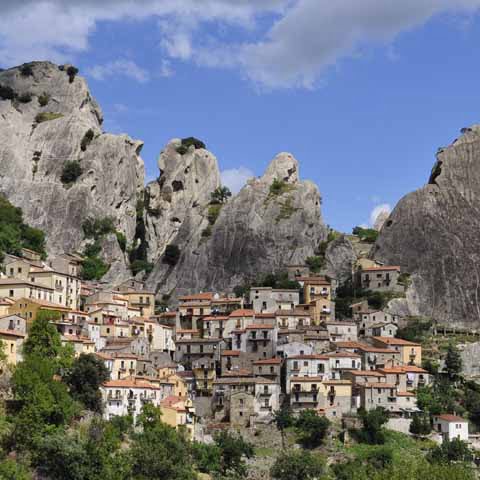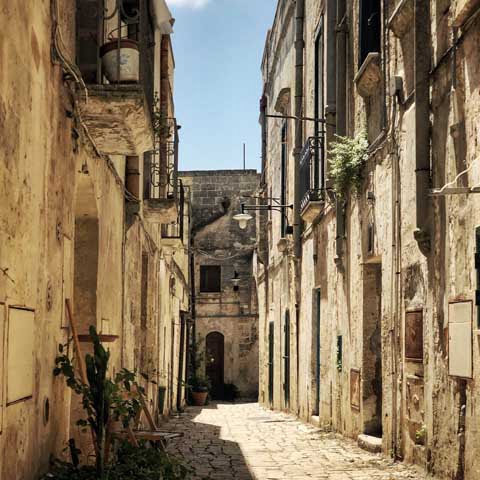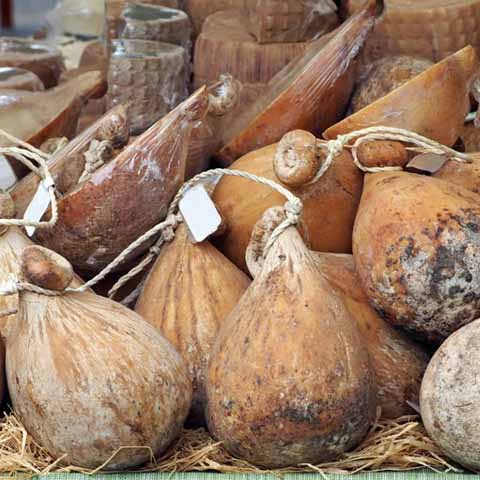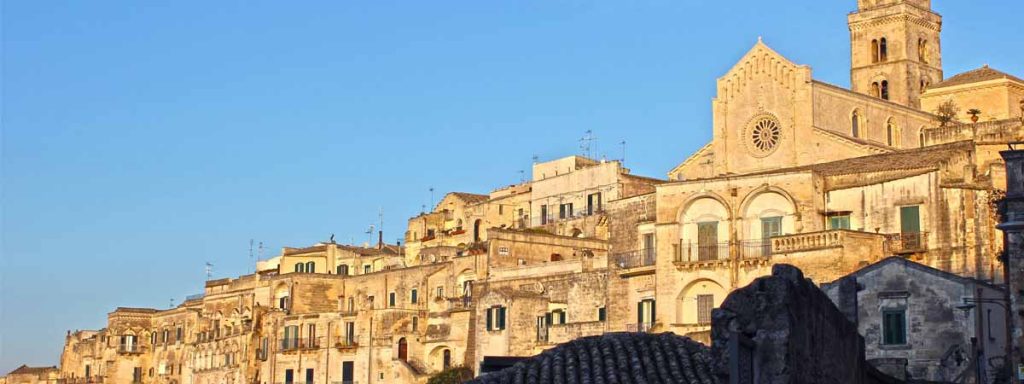The Italian city of Potenza is full of ancient, traditional culture that makes it an obvious choice for its status as the capital of the region of Basilicata and of the province of Potenza. This Southern Italian city is home to approximately sixty-six thousand people that celebrate Potenza’s roots, which now are shaping a new generation. During your visit to this scenic city that provides jaw-dropping views of the Basento River Valley, take some time to soak in its flourishing culture and warm people.
ARCHITECTURE
Much of Potenza’s most beautiful architecture can be found in local churches, many of which have ancient roots. Some of the noteworthy churches in the city are the Cathedral of San Gerardo, the Church of San Francesco, and the Church of San Michele Arcangelo.
The Cathedral of San Gerardo is perhaps one of Potenza’s best known religious institutions. The church is named after the patron saint of the city, Saint Gerard. Although a temple originally existed at this site in the fifth or sixth century, the new church of the Cathedral of San Gerardo is estimated to have been established in the twelfth century. The church endured substantial reconstruction in the eighteenth century, but after more damage from earthquakes and world wars, additional renovations ensued.
The exterior of the church is stately, but plain in nature, with the main features being a modest stairway leading to a framed wooden door and a tall bell tower. The interior of the church is a stark contrast, with stunning beautiful paintings, an ornate ceiling, and elegant side arches.
Another popular Potenza structure is the Church of San Francesco. This church is also thought to have been built in the twelfth century on top of the site of a previous chapel. The building itself is narrow in width but is deep in length and features an adjacent bell tower. The exterior’s main point of interest is an intricately carved wooden door that is estimated to be a fifteenth century addition. The interior of this church is rather plain except for the wooden design on the ceiling and stained-glass window. It is said to house the tomb of Donato de Grassis. Other fascinating points of interest inside the church include a relief work lunette and a variety of paintings including one that famously portrays the Madonna del Terremoto, which translates to Our Lady of the Earthquake.
The Church of San Michele Arcangelo is a Romanesque style structure from the twelfth century. With exterior features like a small stairway leading up to a wooden door with one main window in the front and an adjacent bell tower, the similarities of this stone structure and that of the Church of San Francesco are astonishing. The interior of the church is mostly understated so as not to outshine the large collection of remarkable artwork inside, including masterpieces such as the Madonna of the Rosary, the Fifteen Mysteries, and Madonna del Carmine. The simplicity of the building combined with the vast offering of religious artwork evokes an unmistakable sense of reverence and peace.
Another fascinating place to visit is the Church of Santa Maria del Sepolcro. The Gothic church dates back to the twelfth century and was most likely founded by the Knights Templar. During the fifteenth century, the church was renovated and a Franciscan convent was added. Inside the church is a seventeenth century Baroque altar as well as art by Giovanni Ricca and a sculpture of the Virgin Mary.
Located in the center of historic Potenza is the ancient ninth century tower of Torre Guevara. The circular tower was originally part of one of the city’s castles that was eventually destroyed by the effects of time, weather, earthquakes, and World Wars. The interior of this sixty-five-foot stone tower features more than eighty steps and approximately seven windows spread out over three stories.
The tower was created to be more functional in appearance as it, along with the castle, was primarily used to protect the city against attack. Today, Torre Guevara is often used for art exhibitions.
Long ago, five city doors or gates served as main entrances to Potenza and eventually led to the old city center. Two of the doors, Porta Salz and Porta Mendola, were so severely marred by earthquakes that the city eventually did away with them. There are three remaining gates to the city known as Porta San Luca, Porta Giovanni, and Porta San Gerardo. While the entrances themselves are not ornate and are somewhat simple in nature, it is awe-inspiring to think of the number of people who have walked through those gates over the centuries.
The city of Potenza is also home to several historic palaces with breathtaking architecture. A few examples include Palazzo Loffredo, which hosts the National Archeological Museum and the Civic Art Gallery, as well as Palazzo Pignatari, Palazzo Scafarelli, Palazzo Bonifcaio, and Palazzo del Governo.
ART
The city of Potenza does not have a unique medium of art for which it is widely known for. However, many beautifully crafted works such as pottery, woodworking, and leather items that the region of Basilicata is home to can be found here in abundance and make wonderful souvenirs.
Historic art can be admired at the Pinacoteca Provinciale, or the Provincial Art Gallery, which opened at the beginning of the twentieth century. Inside, travelers can admire an impressive collection of sculptures and paintings spanning the nineteenth to the twentieth centuries. Works by artists such as Giorgio De Chirico, Luigi Guerricchio, Italo Squitieri, and many more are on display here.
Potenza’s Museo Diocesano is home to some of the most important religious art owned by the Diocese of Potenza. Inside the museum, travelers can admire a number of religious works, including those by Neapolitan artisans from the sixteenth to the nineteenth centuries. In addition to art, key historic objects and artifacts pertaining to the diocese’s past are on display as well.
For more modern art, visit the Museo d’Arte Figurativa Contemporanea, or Museum of Figurative Contemporary Art. The collection features works dating back to the first half of the twentieth century. Approximately 450 works of art are on display by artists from the Basilicata region as well as other parts of Italy and other countries.
Located in Palazzo Loffredo, the Civic Art Gallery is an important venue for art exhibitions. Throughout the year, the museum hosts temporary exhibitions that showcase the work of artists from Italy and other parts of Europe.
LITERATURE
Although the city of Potenza itself is not considered a major literary hub, its region of Basilicata is associated with several literary giants such as Quinto Orazio Flacco, Rocco Scotellaro, and Carlo Levi. Of these, perhaps Roman poet Quinto Orazio Flacco, who was born in the province of Potenza, is best known internationally, partly for his coining of the popular phrase “Carpe Diem!”
MUSIC
Music’s influence on the city of Potenza can be seen via the establishments of the Francesco Stabile Theater and Gesualdo da Venosa Music Conservatory. In addition to being the site for a summer music festival, Potenza frequently hosts spontaneous musical concerts in some of the larger piazze.
The Francesco Stabile Theater was established in the late nineteenth century as an opera house. Unfortunately, the building was heavily damaged by the earthquake in the late twentieth century before being rebuilt and reopening almost a decade later. The interior of this theater is stunning and is full of rich, vibrant red hues for the seats and stage curtains. The balconies that stretch several stories high showcase gorgeous gold detailing. Today, the theater’s luxurious elegance lends itself well to both operatic and classical music concerts.
The Gesualdo da Venosa Music Conservatory has been in existence in Potenza for more than forty years. It is named after renowned sixteenth-century madrigal composer, Carlo Gesualdo da Venosa. The conservatory offers Bachelor and Master’s programs and is home to approximately eighty staff members and five hundred students.
CINEMA
The Potenza International Film Festival, also referred to as Potenza IFF, is held annually in December. The festival is a celebration of international cinema that focuses primarily on independent and unique cinema, new filming technologies, and new directors.
Over the years, the city and surrounding province have been home to scenes in Italian films such as Io non ho paura (2003), Quando il sole sorgerà (2012), Il ragioniere della mafia (2013), and La Sorpresa (2015).
SCIENCE
Potenza was the birthplace of nineteenth and twentieth century mathematician Domenico Montesano. The Potenza native is best known for developing mathematical theories on linear congruences and on conic bilinear complexes.
Though not as famous as other Southern Italian destinations, Potenza’s cultural treasures make the city more than worth a visit. The capital of the Basilicata region is home to stunning historic architecture and museums filled with beautiful art, all surrounded by the breathtaking landscapes of Southern Italy.
Don't just see Italy, live it.
Your dream trip to Italy has never been closer
No more endlessly scrolling travel sites. Our travel experts will craft the perfect, one-of-a-kind trip just for you.

300+
DESTINATIONS
We offer more Italian destinations than any travel site. Do and see more with Trips 2 Italy.
1 (of a kind)
ITINERARIES
Because your dream trip to Italy should be designed for you, not for the masses.
100%
PEACE OF MIND
From flights and accommodations, to food and activities - we take care of every detail.




